Welcome to our blog post, where we dive into the exciting realm of hydroponic farming and its potential to revolutionize agriculture in the Philippines. This article will explore the fascinating world of soilless cultivation and its advantages for the local farming industry. From reducing water usage and land requirements to maximizing crop yields, hydroponic farming offers a sustainable and efficient alternative to traditional methods. Join us on this journey as we uncover the innovative techniques, government support, and success stories that showcase the immense potential of hydroponic farming in the Philippines.
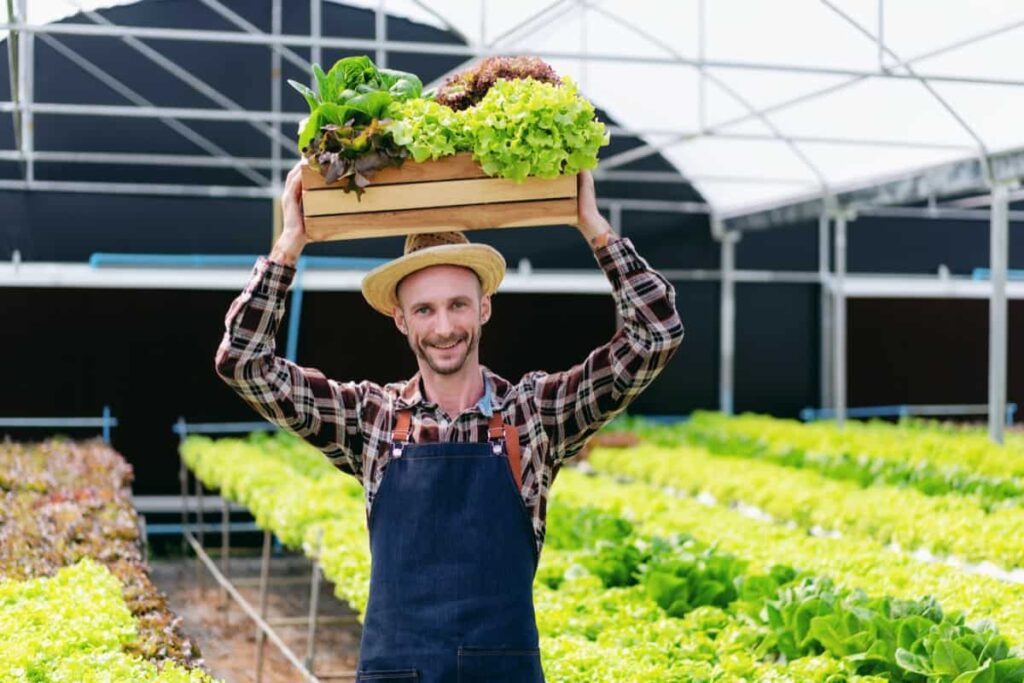
What is Hydroponic Farming?
Hydroponic farming is a soilless cultivation method where plants are grown in a nutrient-rich water solution instead of traditional soil. This technique controls essential factors like nutrient levels, pH balance, and water delivery, ensuring optimal plant growth. Hydroponics allows plants to grow faster and produce higher yields than traditional farming. This innovative approach also conserves water, reduces the need for pesticides, and minimizes the risk of soil-borne diseases.
Market Demand for Hydroponic Farming in the Philippines
The global hydroponics crop market is valued at approximately 37.7 billion USD, projected to grow at a CAGR of 7% and reach 53.4 billion USD by 2027. The Asia-Pacific region, including the Philippines, is expected to be one of the fastest-growing markets, with a CAGR of 17%.
The COVID-19 pandemic emphasized the importance of agriculture in the Philippine economy, leading to an increased interest in hydroponics farming as a potential solution to agricultural challenges. Developed in 2005, the SNAP method has made hydroponics more accessible to Filipinos with its simplicity and low-cost approach. However, educating the public and securing capital for large-scale hydroponics farms still need to be solved.
Hydroponic Farming in the Philippines Cost
Hydroponic farming in the Philippines offers a cost-effective solution for sustainable agriculture. The initial setup cost for a small-scale hydroponic system can range from ₱40,000 to ₱200,000 ($800 to $3,000). This includes essential components like nutrient solutions, growing media, and equipment such as pumps and reservoirs.
In case you missed it: Revolutionizing Agriculture: Exploring the Potential of Hydroponic Farming in Nigeria
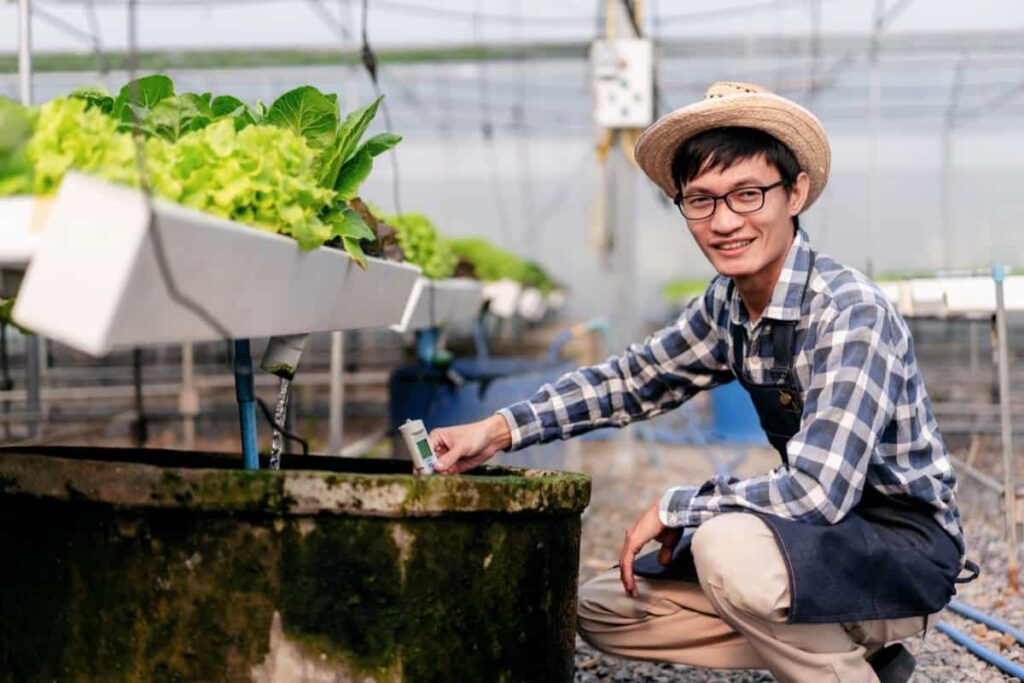
Operational costs mainly involve electricity for lighting and nutrient supplementation, which can amount to approximately ₱3,000 to ₱5,000 ($60 to $100) per month. However, it’s important to note that these costs can vary depending on the scale and complexity of the hydroponic setup. Despite the initial investment, hydroponic farming can yield higher crop productivity and faster growth rates, leading to potential long-term cost savings.
Best Hydroponic Crops in the Philippines
- Lettuce (Lactuca sativa): Lettuce is popular due to its fast growth, high yield, and versatility in hydroponic systems.
- Basil (Ocimum basilicum): This aromatic herb flourishes in hydroponic setups, providing a continuous supply of fresh leaves.
- Strawberries (Fragaria spp.): Hydroponic strawberry cultivation offers controlled conditions that enhance fruit quality and yield.
- Tomatoes (Solanum lycopersicum): Hydroponically grown tomatoes yield larger, healthier fruits and are less susceptible to diseases.
- Leafy greens (Spinach, Kale, etc.): These nutrient-dense greens are well-suited for hydroponics, ensuring a constant supply of fresh, pesticide-free produce.
- Cucumbers (Cucumis sativus): Hydroponic cucumbers exhibit faster growth, higher yields, and uniform fruit quality.
- Bell peppers (Capsicum annuum): These vibrant peppers thrive in hydroponic systems, producing high-quality, colorful fruits.
Hydroponic Farming in the Philippines: Advantages
Hydroponic farming in the Philippines offers different advantages over traditional soil-based agriculture. Scientific studies have shown that hydroponic systems provide optimal nutrient uptake and water efficiency, resulting in accelerated plant growth and higher crop yields. Research indicates that hydroponic farming can achieve up to 90% reduction in water usage compared to traditional farming methods.
Moreover, the controlled environment in hydroponics minimizes the risk of pests, diseases, and weeds, reducing the need for harmful chemical pesticides. This sustainable approach also allows for year-round cultivation, overcoming the limitations of seasonal changes. Additionally, hydroponics enables precise control of nutrient composition, ensuring plants receive the necessary elements for optimal growth. Growing crops vertically in hydroponic systems maximizes land utilization, making it particularly suitable for urban areas with limited space.
Hydroponic Farming in the Philippines: Setup Guide
- Choose the right location: Look for a site with ample space, access to water, and sufficient sunlight or artificial lighting.
- Select the hydroponic system: Nutrient film technique (NFT), deep water culture (DWC), or vertical towers. Consider factors such as available resources, desired crop types, and budget.
- Install the necessary equipment: Grow trays, reservoir tanks, pumps, air stones, and pH meters. Ensure they are properly installed and functioning.
- Prepare the nutrient solution: Follow precise guidelines for mixing essential nutrients and maintaining the appropriate pH levels.
- Acquire quality seeds or seedlings: Choose varieties suitable for hydroponic farming and source them from reliable suppliers.
- Monitor environmental conditions: Regularly measure temperature, humidity, and light levels to create an optimal growing environment.
- Implement proper plant care: Maintain consistent watering schedules, monitor nutrient levels, and control pests and diseases.
In case you missed it: A Comprehensive Guide to Understanding the Working Model of Hydroponic Farming

Hydroponic Farming in the Philippines vs. Traditional Farming
Hydroponic farming in the Philippines is gaining attention due to its numerous advantages over traditional farming methods. Studies have shown that hydroponics can yield 30-50% more crops than traditional soil-based farming. Additionally, hydroponic systems use approximately 90% less water, making them highly efficient in water usage. This is crucial in a country prone to water scarcity and erratic rainfall patterns.
Moreover, hydroponic farming eliminates the need for pesticides and herbicides, producing cleaner and safer produce. The controlled hydroponics environment also allows for year-round cultivation, reducing dependency on seasonal factors. Furthermore, hydroponic systems require less land space, making them suitable for urban areas with limited agricultural land.
Hydroponic Farming Philippines Equipment Suppliers
- Greenhouse.ph: A leading supplier offering various hydroponic systems, including nutrient solutions, grow lights, and pH meters. They provide tailored solutions for various scales of farming operations.
- Agritek garden center: Specializing in hydroponic systems, they offer high-quality grow tents, pumps, air stones, and other essential equipment. They also provide expert guidance and support for setting up and maintaining hydroponic setups.
- Growers supply pH: Known for their comprehensive selection of hydroponic supplies, they offer everything from grow media and net cups to irrigation systems and climate control devices. Their products cater to both commercial growers and hobbyists.
- Hydroponics Philippines: Offering a wide range of hydroponic equipment, including nutrient solutions, grow trays, and grow lights, they ensure quality products for optimal plant growth and yield.
- Urban greens hydroponics: Focusing on urban agriculture, they provide hydroponic kits and systems suitable for small-scale farming. They also offer workshops and training programs to educate aspiring hydroponic farmers.
Hydroponic Farming in the Philippines: Government Regulations
- The Philippines Department of Agriculture promotes and regulates hydroponic farming through various policies and programs.
- Hydroponic farmers must comply with the Bureau of Plant Industry (BPI) regulations to ensure food safety and quality.
- BPI requires hydroponic farmers to register their farms and obtain necessary permits.
- Approved nutrient solutions and pest control methods are mandated to maintain crop health and prevent contamination.
- Regular inspections and monitoring are conducted to ensure compliance with safety standards.
- Hydroponic farms are encouraged to adopt sustainable practices and minimize environmental impact.
- The government provides technical assistance, training, and financial support to promote hydroponic farming in the country.
- Collaboration with research institutions and universities helps develop new technologies and improve hydroponic systems’ efficiency.
In case you missed it: 15 Common Mistakes to Avoid in Hydroponic Farming: Beginner’s Guide
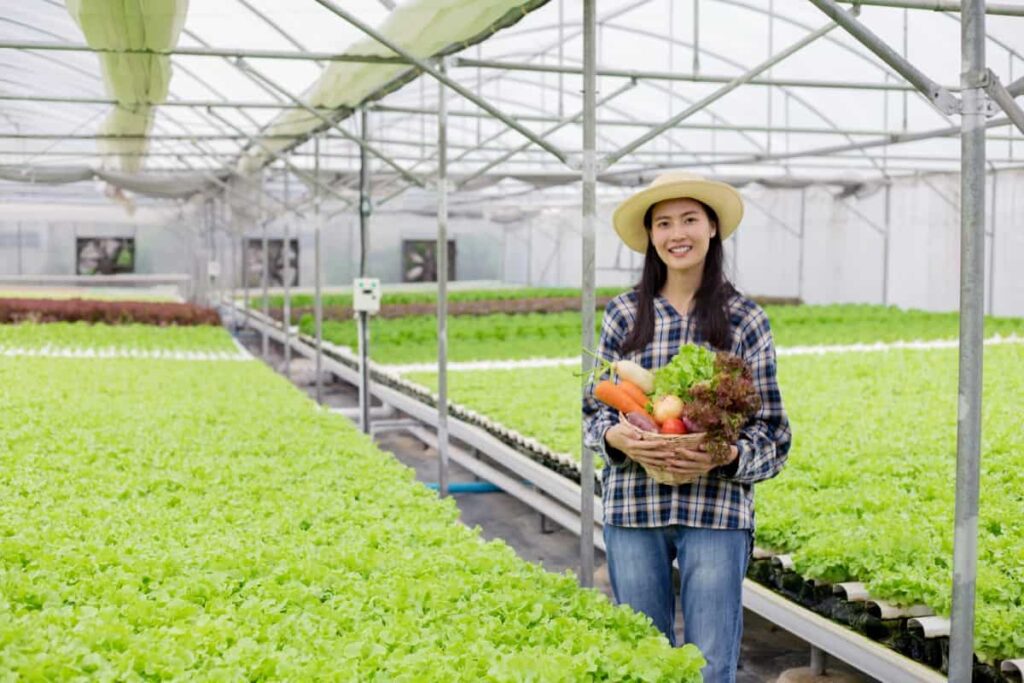
Hydroponic Farming in the Philippines: Success Stories
Hydroponic farming has gained traction in the Philippines, with numerous success stories showcasing its potential. One such story is that of a small-scale farmer in Metro Manila who adopted hydroponics to overcome limited space. With a hydroponic setup in a small rooftop area, the farmer cultivated lettuce and other leafy greens, generating a consistent income throughout the year.
In another instance, a community in Cebu utilized hydroponics to grow vegetables in a controlled environment, resulting in higher yields and reduced water usage compared to traditional methods. Scientific studies have also highlighted the benefits of hydroponic farming in the Philippines. Research conducted by local universities demonstrated that hydroponic systems produced significantly higher crop yields and required 90% less water than conventional farming.
Hydroponic Farming in the Philippines: Nutrient Solutions
Hydroponic farming in the Philippines relies on nutrient solutions, which provide essential elements for plant growth. These solutions are carefully formulated to ensure optimal nutrient uptake and plant development. The three primary macronutrients—nitrogen (N), phosphorus (P), and potassium (K)—are crucial for plant growth, and their concentrations in the solution must be properly balanced.
Additionally, secondary macronutrients such as calcium (Ca), magnesium (Mg), and sulfur (S), along with micronutrients like iron (Fe), manganese (Mn), zinc (Zn), copper (Cu), boron (B), and molybdenum (Mo), are also included in the nutrient solutions. The concentration of these nutrients is measured in parts per million (ppm), ensuring precise and accurate nutrient delivery.
Hydroponic Farming Philippines: DIY Systems
Hydroponic farming in the Philippines has gained popularity due to its potential for DIY systems. These systems allow individuals to create their hydroponic setups using readily available materials. DIY hydroponic systems typically involve nutrient solution reservoirs, growing containers, and an irrigation system.
By using these systems, farmers can control nutrient levels, pH balance, and water supply, ensuring optimal conditions for plant growth. Additionally, DIY hydroponic systems offer flexibility in size and design, allowing for customization according to available space and specific crop requirements.
Hydroponic Farming in the Philippines: Urban Agriculture
Hydroponics is a soilless cultivation technique that utilizes nutrient-rich water solutions to grow plants. This method allows for precise control over nutrient levels and water usage, resulting in higher crop yields. With limited space available in urban areas, hydroponic systems offer the advantage of vertical farming, maximizing production in a compact footprint. The efficient use of resources in hydroponics reduces water consumption by up to 80-90% compared to traditional soil-based farming methods, making it an environmentally sustainable option for urban agriculture in the Philippines.
Hydroponic Farming in the Philippines: Sustainable Practices
Hydroponic farming in the Philippines has gained popularity due to its sustainable practices and environmental benefits. One of the key advantages is water conservation, as hydroponics uses up to 90% less water compared to traditional soil-based farming. Nutrient solutions are carefully calibrated, resulting in optimal resource utilization and minimal waste.
In case you missed it: How to Grow Lettuce and Salad Mix in Hydroponics: A Step-by-Step Guide
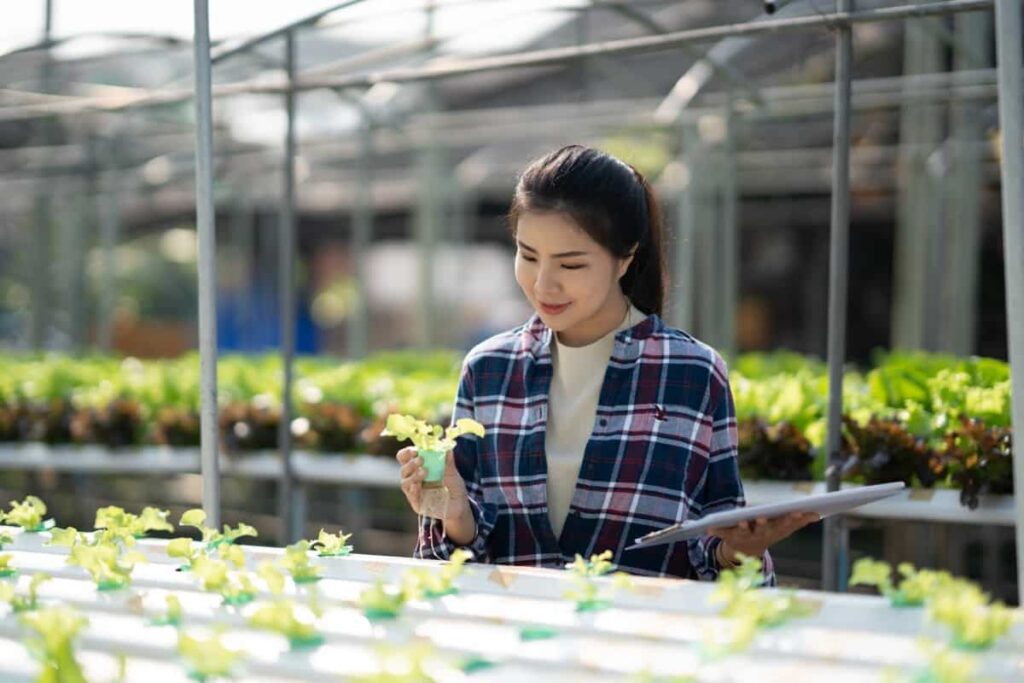
The controlled environment in hydroponic systems minimizes the need for pesticides, reducing chemical usage and potential environmental pollution. Moreover, hydroponics allows year-round cultivation, eliminating the dependence on seasonal factors and ensuring a consistent food supply. The efficient use of space is another notable aspect, as hydroponic setups can be designed vertically, maximizing land utilization.
Hydroponic Farming in the Philippines: Indoor vs. Outdoor Setups
Indoor hydroponic setups in the Philippines offer controlled environments for optimal plant growth, with fine-tuned temperature, humidity, and lighting. However, they require higher initial investment due to artificial lighting and climate control systems. Outdoor setups use natural sunlight and open-air conditions but face weather fluctuations, seasonal limitations, and pests.
Hydroponic farming in the Philippines uses nutrient-rich water solutions without soil but requires careful monitoring and adjustment for optimal plant health. Aquaponic farming combines hydroponics with aquaculture, creating a sustainable ecosystem with plants purifying water for fish.
Hydroponic Farming Philippines: Vertical Farming Solutions
Vertical farming solutions in hydroponic farming have gained significant attention in the Philippines due to their space-saving capabilities and increased crop production. Studies have shown vertical farming can achieve crop yields up to 10 times higher than traditional farming methods.
Farmers can maximize the use of limited land space by utilizing stacked layers or vertical towers and grow a wide variety of crops throughout the year. Additionally, vertical farming minimizes the need for pesticides and herbicides, resulting in healthier and more environmentally friendly produce. This innovative approach also allows precise control over lighting, temperature, and nutrient distribution, optimizing plant growth and minimizing resource wastage.
Hydroponic Farming Philippines Training Programs
Institutes and organizations provide training courses for aspiring hydroponic farmers, covering system design, nutrient management, pest control, and crop selection. The Philippine Hydroponics Society offers workshops and seminars, combining theoretical and practical sessions for hands-on experience in hydroponic farming techniques.
Hydroponic Farming in the Philippines: Challenges and Solutions
Hydroponic farming in the Philippines needs more awareness, high initial investment, and limited access to quality inputs. To overcome these challenges, education and training programs can enhance farmers’ knowledge and skills, while government support and incentives can alleviate the initial investment burden.
In case you missed it: Hydroponic Nutrient Chart: For Vegetables, Herbs, and Flowers
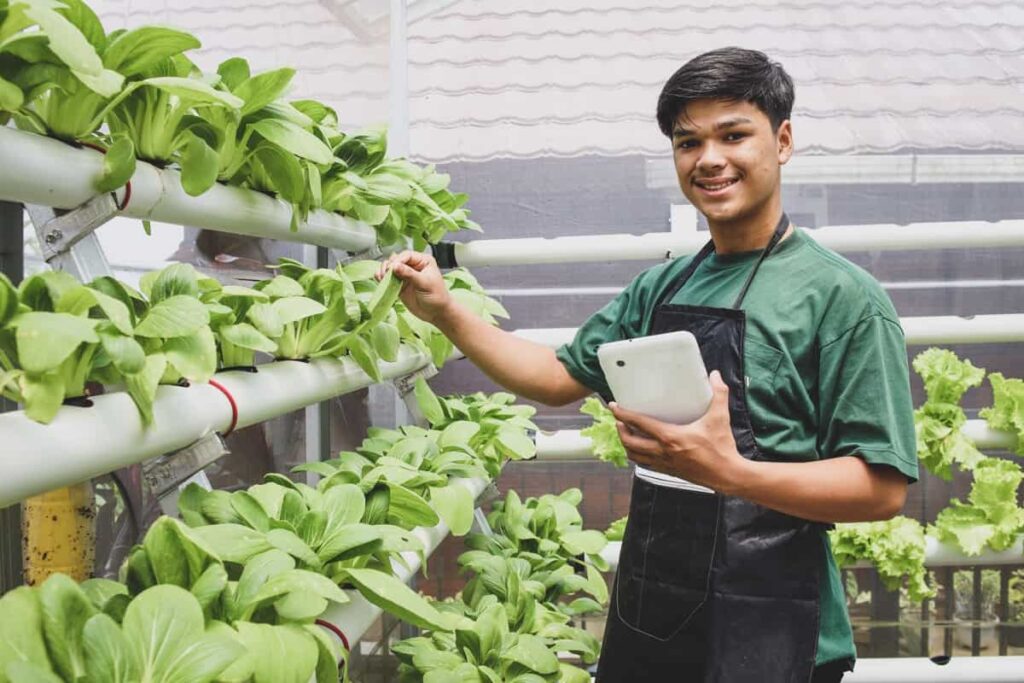
Collaborative research and development can drive advancements in hydroponic farming technology, resulting in better access to quality inputs. Knowledge-sharing platforms can foster learning, information sharing, and problem-solving among hydroponic farmers, ultimately promoting wider adoption and reducing the financial burden on small-scale farmers.
Conclusion
Hydroponic farming has the potential to revolutionize agriculture in the Philippines. With its sustainable practices, efficient use of resources, and increasing training programs, it presents a promising solution for enhancing food production, ensuring food security, and promoting a greener future for the nation.
- Crops Grown in Summer Season: Best Choices for Summer Gardening
- Organic Pest Control for Tomato Farming
- How to Maximize Sheep Farming Profit
- Broccoli Varieties: Choosing the Right Cultivars for Your Farm
- How to Raise Pigs in Your Own Backyard: A Comprehensive Guide
- Budget Friendly Sheep Shed Ideas: Cheap and Low-Cost Tips
- How Much Do Cattle Farmers Make: Revenue Streams in Cattle Farming
- Management Pests and Diseases in Your Cotton Field
- Sheep Farming Business Plan for Beginners
- Aquaponic Farming at Home: A Step-By-Step Guide
- Profitable Village Farming Business Ideas in 2024
- High-Yield Aquaculture: Fast-Growing Fish for Farming
- Effective Fish Pond Construction Techniques for Beginners
- Irrigation and Water Management in Pineapple Farming
- Blossom to Harvest: Mastering Flowering and Pollination in Papaya Farming
- Pig Fattening Essentials: From Selection to Sale for Beginners
- Raising Wagyu Cattle: A Complete Guide for Premium Beef Production
- Soil Types and Their Water Holding Capacity
- Optimizing Irrigation Schedules for Coconut Groves for Enhanced Yield
- Espresso Your Garden: Coffee Grounds for Healthier Acid-Loving Plants
- The Best Soil Mix for Snake Plants: How to Mix Your Own Snake Plant Soil
- Green Thumb Success: Expert Tips for Cultivating Greenhouse Beans All Year Round
- Bloom All Year Round: The Ultimate Guide to Indoor Hyacinth Care
- Eco-Friendly Gardening: How to Make Liquid Fertilizer from Kitchen Waste
- Ultimate Guide to Grow Anise in Pots: Explore Seed Propagation to Harvesting
- Guide to Raising Chester White Pigs: Discover Breed Facts to Growth Management
- Mastering the Elegance: The Ultimate Guide to Weeping Cherry Tree Care, Planting, and Maintenance
- Ultimate Guide to Planting Garlic in Grow Bags: Growing Strategies for Beginners
- How to Fix Spider Plant Leaf-Related Problems: Natural and Organic Remedies
- 10 Reasons Why Your Tulsi Plant is Shedding Leaves: Home Remedies and Solutions
- Optimizing Growth and Yield: The Advantages of Palm Bunch Ash Fertilizer
- Utilizing Neem Oil Extract as a Natural Pesticide for Hydrangea
- From Soil to Harvest: Various Ways in Which Farmers Can Use AI Tools
- Steps to Encourage and Induce Citrus Flowers: A Comprehensive Guide
- How to Fix Snake Plant Leaf-Related Issues: Natural and Organic Remedies
- Transform Your Garden into a Fragrant Oasis with Raat Ki Rani (Night Blooming Jasmine)
